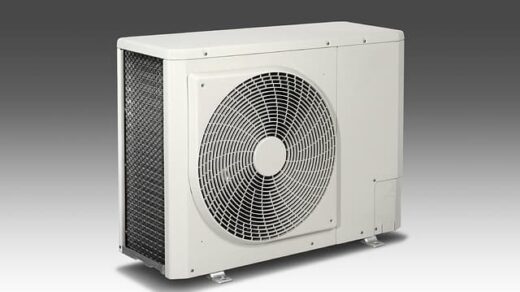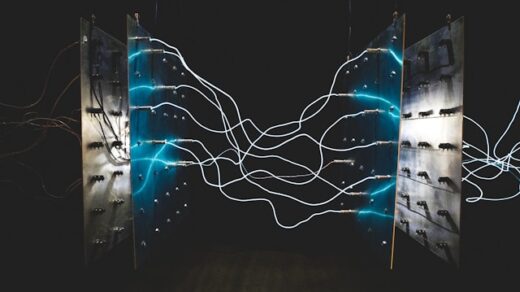Navigating the intricate landscape of electrical power measurements can often seem like a daunting endeavor. With an array of units each representing different aspects of power and energy, comprehension becomes essential for informed decision-making.
This article serves as a comprehensive guide, shedding light on the myriad of units involved in measuring electrical power, their applications, and their implications for both individual and industrial consumers.
From evaluating the efficiency of household appliances to making informed choices for large-scale electrical installations, understanding how power is quantified is fundamental.
Table of Contents:
- Unraveling the Joule;
- The Significance of Ampere;
- Voltage and Its Implications;
- The Role of Ohm in Electrical Resistance;
- Watts – The Unit of Energy Transfer;
- Decibel-Watt and Signal Strength;
- Ampere-Hour in Charge Measurement;
- Kilowatt-Hour: The Consumer’s Metric;
- Tesla;
- Hertz;
- Electrical Ratings of Common Household Items;
- How Utility Companies Gauge Electrical Consumption;
- Strategies for Effective Energy Monitoring;
- Insights into Energy Efficiency;
- The Role of Renewable Energy Sources;
- Electrical Safety Protocols;
- Conclusion.
Unraveling the Joule
In the realm of energy measurement, the joule emerges as a quintessential unit. Named in honor of James Prescott Joule, this unit is instrumental in evaluating the work exerted on an object subject to force. In numerical terms, a joule equates to the energy expended when a force of one newton is applied over a distance of one meter. Furthermore, in electrical contexts, it characterizes the heat dissipation resultant from the passage of a one-ampere current through a one-ohm resistance over one second.
The Significance of Ampere
An essential element in electrical quantification, the ampere, named after the renowned physicist André-Marie Ampère, denotes the passage of electrical charge. Specifically, it represents one coulomb of charge traversing a specific point in one second. Ampere serves as a cornerstone in the assessment of electrical currents, paving the way for accurate evaluations and efficient energy utilization.
Voltage and Its Implications
Named after the illustrious Alessandro Volta, the unit ‘volt’ is central to understanding electrical potential differences. It quantifies the electric potential divergence between two points on a conductor, essential for evaluating diverse elements ranging from battery power to electrical transmission lines.
The intricate calculation of volts is paramount in diverse electrical applications, warranting a comprehensive grasp of effective energy management.
The Role of Ohm in Electrical Resistance
The ohm, indicative of electrical resistance, owes its name to Georg Simon Ohm. This unit is indispensable for evaluating the resistance encountered by an electric current as it traverses a conductor. Being a standard measure in evaluating speakers’ power and other electrical components, the ohm’s comprehension is pivotal for individuals and industries alike.
Watts – The Unit of Energy Transfer
Named after James Watt, watts quantify energy transfer, defined precisely as one joule transferred per second. In everyday contexts, watts are instrumental in evaluating the energy consumption of common household appliances, offering insights into their efficiency and operational costs.
Decibel-Watt and Signal Strength
The decibel-watt emerges as a specialized unit, pivotal for assessing electrical signal strength. In technological contexts, especially those involving communication systems, understanding dBW is essential for optimizing signal transmission and reception.
Ampere-Hour in Charge Measurement
A measure of electrical charge over an hour, ampere-hour, provides insights into the electrical consumption of batteries and complex systems like X-rays. This unit is instrumental for efficient energy planning and utilization.
Kilowatt-Hour: The Consumer’s Metric
The kilowatt-hour stands as a consumer-centric unit, offering direct insights into household and industrial energy consumption. It translates into the energy expended over an hour by an appliance rated at one thousand watts. This metric is a common feature in electricity billing, offering a transparent view of energy utilization patterns.
Tesla
The term ‘Tesla’ often draws associations with the renowned inventor Nikola Tesla or the popular electric car manufacturer. However, in the scientific arena, a Tesla (T) represents a unit of magnetic induction. Although this unit isn’t a staple in everyday parlance, it finds relevance in specific contexts, including the characterization of magnetic fields produced by loudspeakers, specialized tools, and in assessing potential damages to computer electronics by robust magnets.
The measure of solar phenomena like sunspots and flares also employs the Tesla unit, offering insights into their magnetic intensity and potential impacts on Earth’s electromagnetic environment.
Hertz
Navigating the complex terrains of electrical frequencies, the unit ‘Hertz’ (Hz) emerges as a critical metric. Christened after Heinrich Rudolf Hertz, the scientist who affirmed the existence of electromagnetic fields, Hertz facilitates the measurement of cyclic phenomena like sound frequencies, processor speeds, and electromagnetic wave frequencies.
A comprehensive understanding of Hertz is essential in various domains, including music, computing, and telecommunications.
<iframe width=”560″ height=”315″ src=”https://www.youtube.com/embed/mvuHsu8S6v8?si=q0tj3LmvDzneHKCW” title=”YouTube video player” frameborder=”0″ allow=”accelerometer; autoplay; clipboard-write; encrypted-media; gyroscope; picture-in-picture; web-share” allowfullscreen></iframe>
Electrical Ratings of Common Household Items
The electrical landscape of a typical household is replete with appliances and devices, each with distinct electrical specifications. For instance, smoke detectors commonly rely on 9-volt batteries, while a standard automobile is powered by a 12-volt battery. The ubiquitous USB cables, essential for charging a plethora of devices, operate at 5 volts of direct current.
How Utility Companies Gauge Electrical Consumption
Utility providers employ sophisticated meters to quantify the electrical consumption of residential and commercial establishments. These devices, ranging from mechanical iterations to advanced digital variants, facilitate accurate billing and energy management.
Digital meters, equipped with capabilities to relay consumption data to the service provider, offer real-time insights into energy usage patterns. The advent of smart meters, complemented by user-friendly mobile applications, empowers consumers to monitor and manage their energy consumption proactively.
Strategies for Effective Energy Monitoring
Smart meters offer consumers a granular view of their energy consumption. These advanced devices not only provide insights into overall household energy usage but can also track the consumption of individual appliances. This granularity of data is instrumental in optimizing energy usage and reducing operational costs. The formula for estimating the operational cost of an appliance involves multiplying its energy consumption (in kWh) by the utility provider’s rate per kWh.
Insights into Energy Efficiency:
- Energy Auditing: Regular energy audits can unveil potential inefficiencies in your energy consumption patterns, offering actionable insights to optimize usage;
- Appliance Efficiency Ratings: Prioritize appliances with superior energy efficiency ratings to reduce operational costs and environmental impacts;
- LED Lighting: Transitioning to LED lighting solutions ensures optimal illumination at significantly reduced energy consumption levels;
- Smart Thermostats: These devices optimize heating and cooling systems’ operation, ensuring comfort at reduced energy expenditure;
- Solar Installations: Integrating solar panels can significantly mitigate reliance on grid power, reducing utility bills and enhancing sustainability.
The Role of Renewable Energy Sources
The shift towards renewable energy sources such as solar, wind, and geothermal energy is a critical step in addressing the mounting environmental concerns associated with conventional energy generation methods. These renewable alternatives are not only instrumental in reducing greenhouse gas emissions but are also characterized by their sustainability and efficiency. The solar panels, for instance, harness energy directly from the sun, converting it into usable power without emitting pollutants. Wind turbines similarly capture energy from wind currents, transforming kinetic energy into electrical power.
Technological innovation plays a significant role in enhancing the effectiveness and affordability of renewable energy systems. Advances in materials science, energy storage, and grid management have reduced costs, increased efficiency, and made renewable energy a feasible option for widespread adoption. Integration of artificial intelligence and machine learning algorithms has further optimized energy generation, storage, and distribution, ensuring that renewable sources are utilized to their fullest potential.
Legislation and policies supporting the development and implementation of renewable energy are also significant. Subsidies, incentives, and grants have encouraged not only the corporate sector but also homeowners to invest in renewable energy systems. The cumulative effect of these measures is a gradual yet discernible transition towards a cleaner, sustainable, and more resilient energy landscape.
Electrical Safety Protocols
The importance of safety in electrical installations and operations cannot be overstated. Every aspect, from the design phase to maintenance, is governed by stringent safety protocols aimed at mitigating risks and preventing accidents. Proper wiring practices are essential, requiring adherence to specified standards to ensure the safety of both the installation and its operators. The selection of insulating materials, too, is critical, with a focus on materials that offer optimal protection against electrical faults and external elements.
Regular maintenance is another pivotal aspect of electrical safety. By consistently monitoring and maintaining electrical systems, potential issues can be identified and addressed before they escalate into serious hazards. This proactive approach is not only essential for safety but also for the optimal performance and longevity of the electrical installations.
Training and awareness among those handling electrical systems is equally important. Ensuring that individuals are equipped with the knowledge and skills to safely operate and manage electrical installations contributes significantly to overall safety. Protocols evolve with technological advancements, and staying abreast of the latest safety measures and guidelines is imperative.
Conclusion
The measurement of electrical power and energy is foundational to understanding and optimizing energy use across various sectors. Each unit, from Tesla and Hertz to kilowatt-hours and volts, serves a specific purpose, offering insights into different aspects of electrical and magnetic phenomena. They are vital tools that engineers, scientists, and technicians use to quantify, analyze, and improve energy systems.
Renewable energy sources are becoming increasingly central in efforts to transition to cleaner and more sustainable energy practices. The evolution of technology continues to lower the barriers to entry, making these sources more accessible and efficient.
Safety in electrical installations and operations is paramount. It requires a comprehensive approach, combining standardized protocols, advanced materials, regular maintenance, and continuous learning. The objective is not only to prevent accidents and hazards but also to ensure that electrical systems operate optimally and sustainably.







